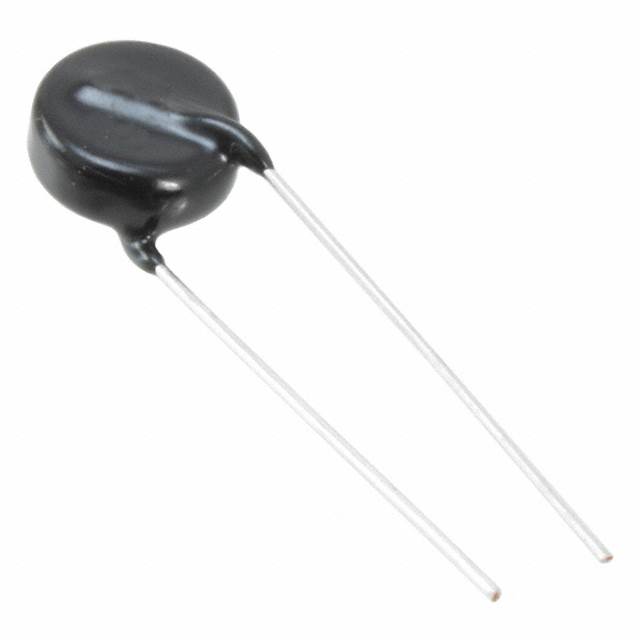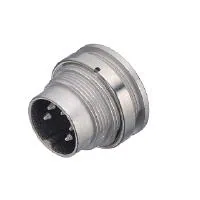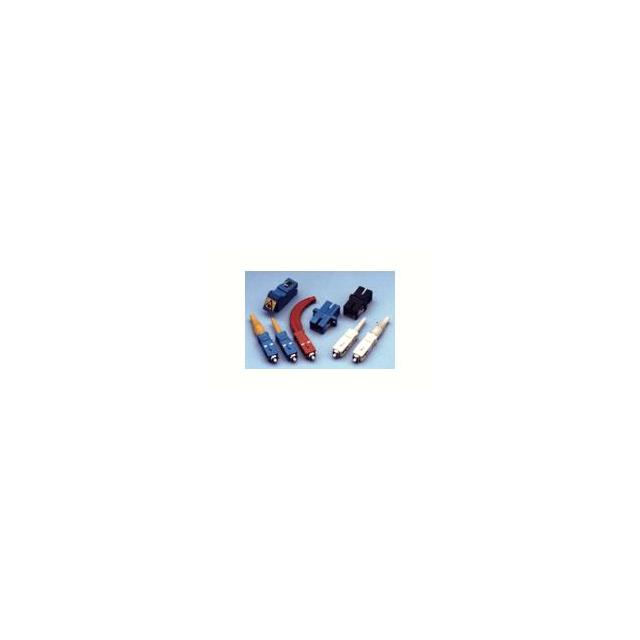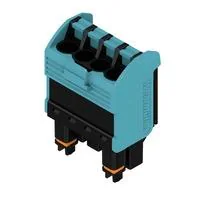
Electrosurgery Electronics: Turning RF Into a Surgical Superpower
Global electronic component supplier ERSAELECTRONICS: Rich inventory for one-stop shopping. Inquire easily, and receive fast, customized solutions and quotes.
If House of the Dragon is “fire and blood,” Electrosurgery is “current and control.” No fireballs, no mythic beasts—just carefully shaped radio-frequency energy that can cut like a lightsaber and coagulate like a magic spell, provided your electronics are composed, quiet, and medically safe.
Disclaimer: Engineering guide only—no clinical claims. Designs must comply with risk management (ISO 14971), software life-cycle (IEC 62304), usability (IEC 62366), and IEC 60601-2-2 for Electrosurgical equipment, plus applicable EMC and safety standards. Patient safety beats clever tricks, every time.
Table of Contents
1) What Electrosurgery Actually Is (and isn’t)
Electrosurgery uses high-frequency AC (typically 300 kHz–1.7 MHz) to cut and coagulate tissue with minimal neuromuscular stimulation. Modes like Cut, Coag, and Blend are not marketing poetry; they’re about waveform shape, duty cycle, crest factor, and average power delivered into tissue that changes impedance mid-stroke.
- Monopolar Electrosurgery: Active electrode (pencil) delivers RF; a return electrode (“patient plate”) collects it.
- Bipolar Electrosurgery: Both electrodes at the instrument tip; currents are local and lower.
- Argon Plasma Coagulation (APC): Ionized argon gas conducts RF to achieve non-contact coagulation—great for certain GI and surgical applications.
- Goals: Predictable power into tissue, controlled thermal spread, and reliable hemostasis at low latency.
Think of it like Obi-Wan’s “elegant weapon”: the output looks simple—a sine-ish or bursty RF waveform—but beneath the hood live control loops, couplers, detectors, isolation, and safety logic that would make Oppenheimer triple-check the BOM.
2) System Architecture: From Mains to the Monopolar Tip
A modern Electrosurgery stack, simplified:
- AC-DC Front End
— EMI filter → Inrush → PFC (e.g., 400 VDC bus) → Isolated DC/DC rails.
— Reinforced isolation, medical creepage/clearance, leakage limits. - Controller & Safety Brain
— MCU/MPU + safety supervisor, watchdog, event logger, RTC. - RF Generator
— Synthesizer/VCO/DDS → Enveloping/Modulation → Power driver → RF PA (Class E/AB/F, GaN or LDMOS) → Matching network → Isolation transformer → Output terminal. - Directional Coupler & Detectors
— Sense forward and reflected power, compute load impedance in real time. - Return Electrode Monitoring (REM/CRE)
— Low-frequency or HF-riding impedance monitor across split patient pad with fail-safe outputs. - Handpiece, Footswitch & Accessory ID
— Resistor/EEPROM IDs, debounce, isolation, and interlocks. - User Interface
— Mode/power set, status, audible alarms, and neutral electrode contact quality. - Comms & Data
— Service port, optional Ethernet/USB, unique device ID, traceability.
The Electrosurgery personality emerges from how fast and precisely you close the loop on tissue impedance, how clean your RF power is, and how gracefully you derate when accessories or pads misbehave.
3) RF Generation & Power Stage: Class E/AB/F, GaN vs. LDMOS
In Electrosurgery, your PA is the hero shot:
- Frequency: 300 kHz–1 MHz common for monopolar cut/coag; APC often around 350–500 kHz (device-dependent).
- Topologies:
- Class E: High efficiency at single frequency, great for Cut. Needs careful drain shaping, ZVS/ZVDS timing, and gate driver finesse.
- Class AB/F: More forgiving with variable loads; lower efficiency than ideal Class E but robust.
- Full/Half-Bridge with series/parallel resonant matching.
- Semiconductors:
- GaN FETs (e.g., EPC, GaN Systems): fast edges, low Qg, compact magnetics.
- LDMOS RF transistors (NXP/Ampleon): proven ruggedness and SOA under mismatch.
- Gate Drivers: Low propagation delay, high dV/dt immunity, split pull-up/pull-down, and Miller clamp.
- Matching Network: You’re matching to tissue + cable + instrument that wander with time; design for VSWR 3:1 or worse, with foldback and detune detection.
- Isolation Transformer: Meets 60601-2-2 HF leakage; watch stray capacitance from primary to secondary—it’s your hidden EMC tax.
Waveform Craft:
- Cut: near-continuous RF, moderate crest factor, smooth envelope.
- Coag: intermittent bursts (lower duty cycle), higher crest factor, more thermal effect without deep incision.
- Blend: parameterized cross-fade, typically 25–75% duty.
- APC: RF couples through ionized argon; the PA must tolerate arc dynamics and rapid impedance collapse.
Electrosurgery pro-tip: Guard your PA with over-current, over-voltage, over-temp, and mismatch foldback tied to coupler math. Add a “crowbar soft stop” that saves silicon and the case narrative.
.png?x-oss-process=image/auto-orient,1/quality,q_70/format,webp)
4) Sensing & Control Loops: Power, Crest Factor, and Tissue Tracking
A reliable Electrosurgery experience depends on honest watts into a moving target.
- Directional Coupler: Couples a tiny fraction of line power to detectors—one forward, one reverse.
- Detectors:
- RMS/log detectors convert RF envelopes to DC (usable over temperature).
- High-speed ADC sampling of I/Q lets you compute V, I, phase, Z, PF.
- Control Targets:
- Constant power: \( P = V \cdot I \cdot \cos\phi \).
- Crest factor & duty cycle for mode signatures.
- Impedance slope (dZ/dt) for tissue state awareness—smart limits prevent sticking or charring.
- Latency: Sub-millisecond loop steps for stable cut; Electrosurgery feels “buttery” when the loop anticipates impedance dips.
- Calibration: Golden 100 Ω/200 Ω loads, open/short references, temperature compensation, and traceable power meters.
5) Return Electrode Monitoring (REM/CRE): Because Pads Must Behave
Monopolar Electrosurgery uses a patient return electrode. Bad contact = localized heating risk.
- Split Pad Technique: Two halves form a sensing pair. Drive a low-frequency excitation (or measure at RF with careful filtering).
- Measure: Differential impedance and balance; falling contact area raises impedance and imbalance.
- Action: Inhibit RF, alarm, and instruct repositioning.
- Design Notes:
- High CMRR front-end; medical isolation.
- Immunity to ESU HF energy—filtering and shielding matter.
- Use fail-positive logic—broken cable = inhibit.
Electrosurgery brands use different acronyms (REM, CRE, NEM), but the electronics rhyme: measure well, alarm decisively, and never false-reassure.
6) Accessories & Interfaces: Handpiece ID, Footswitch, Argon & Smoke
- Handpiece/Tip ID:
— Resistor coding or 1-wire/EEPROM for instrument recognition and power caps.
— Debounce, contact wetting, ESD protection. - Footswitch:
— Dual channels for Cut and Coag; galvanic isolation; support momentary/latched behaviors. - APC Module:
— Gas flow control (mass-flow sensor, proportional valve), high-voltage ignition considerations, interlocks for gas + RF. - Smoke Evacuation:
— External enable line; EMI-quiet switching; optional flow feedback.
Accessories decide how Electrosurgery feels in the OR: if the pedal is mushy, or the handpiece gets the wrong mode, you’ll hear about it.
.png?x-oss-process=image/auto-orient,1/quality,q_70/format,webp)
7) Power, Thermal & Isolation: The Quiet Strength Behind Electrosurgery
Electrosurgery is a power sport. Keep rails calm and heat paths obvious.
- Front End:
— Medical-grade AC-DC with PFC; earth leakage within limits; thermal design for high duty cycles.
— Hold-up time to survive brownouts without glitching the PA. - Secondary Rails:
— PA bus (e.g., 48–100 V), logic 3.3/5 V, gate-drive 6–12 V, analog quiet rails via LDOs.
— Star-ground philosophy; separate noisy RF vs sensitive analog. - Heat:
— Heatsinks with air tunnels, heat spreaders, hot-spot aware layout.
— NTCs on PA devices; derate instead of hard kill. - Isolation:
— Reinforced isolation for patient-applied parts; floating HF output transformer with minimal parasitics.
— Medical creepage/clearance; opto/digital isolators rated for medical pollution degree and altitude.
8) EMC & Safety: Passing 60601-2-2 Without Losing Your Weekend
- HF Leakage & Output Isolation: Measured per IEC 60601-2-2; verify at max power, longest cable, and ugly loads.
- Radiated/Conducted Emissions: The PA wants to be a pirate radio; box it in with shielded compartments, RF gaskets, filtered feedthroughs.
- Immunity: Test while transmitting at power with duty and cable motion. If you pass only when idle, you didn’t pass.
- ESD: Locate zap points at handpiece jack and front panel; verify recovery time, not just survival.
- Risk Controls: Hardware interlocks, watchdog, foldback limits, self-tests at startup, WVTR/aging of pads called out in IFU.
Electrosurgery that is electrically beautiful but fails EMC… isn’t done.
9) UI/UX & Firmware: Modes, Logs, and Failsafes that Feel Obvious
Electrosurgery users want “press, cut, done.”
- UI: Big Cut/Coag selectors, precise Watt control, and audible tone per mode.
- Latency: From pedal to RF < 20–50 ms feels instantaneous.
- Profiles: Surgeon presets; APC mode gated by gas ready; handpiece ID auto-limits power.
- Logs: Store power delivered, time at power, REM events, faults, serials—gold for service and vigilance.
- Firmware:
- RTOS or bare-metal with fixed update cadences.
- Independent safety MCU that can pull the plug on RF.
- Bootloader + signed updates, CRC on calibration tables.
.png?x-oss-process=image/auto-orient,1/quality,q_70/format,webp)
10) Manufacturing & Calibration: Golden Loads and Honest Watts
- Fixtures:
— 50/100/200 Ω non-inductive loads, high-power dummy resistors, directional coupler calibration boards.
— Isolation transformer test jig for HF leakage. - Cal Steps:
— Zero/Span for detectors; forward/reflected linearization; phase correction; temperature compensation. - Traceability:
— Serial-numbered calibration files, FRAM/flash storage, printed label with checksum. - Burn-In:
— Pulsed power life test; thermal ramp; accessory plug/unplug cycles.
11) Verification & Validation: Proof Beats Vibes (Again)
- Power Accuracy: ±(5% + 2 W) across cable sets and temperatures.
- Crest Factor & Duty: Match spec across modes; scope with RF detector chain and envelope trigger.
- REM/NEM: Trip at defined pad impedance delta; log reason codes.
- EMC Suite: Pre-scan early; tune the choke/cap ladder; confirm recovery metrics.
- Software V&V: Requirements → tests → objective evidence; fault injection (sensor open/short).
- Usability: Worst-case gloves, lighting, and noise; auditory cues that the team can actually distinguish.
12) Sample BOM by Function (component examples)
Note: Parts are examples to anchor design thinking, not endorsements. Always verify ratings, lifecycles, and compliance.
A) RF Synthesis & Envelope
- PLL/VCO/DDS: Analog Devices ADF4351/ADF4356, AD9910/AD9958
- DAC (envelope/drive): TI DAC8734, ADI AD5686R
- Clocking: SiTime SiT8008, SiLabs Si5341
B) RF Power Stage
- GaN FETs: EPC EPC2034C, GaN Systems GS61008T
- LDMOS: NXP MRF6V/MRFE6 series, Ampleon BLF series
- Gate Drivers: TI LMG1210, UCC UCC27714/UCC21540, ADI ADuM4121 (isolated)
- Magnetics: Custom RF transformer (reinforced isolation), Coilcraft RF inductors (verify SRF/Isat)
- Snubbers & TVS: Bourns/TDK TVS; C0G/NP0 caps at the hot end
C) Directional Coupler & Detectors
- Coupler: Mini-Circuits TCD-10-1, ZFBDC series (spec-check at chosen frequency)
- RMS/Log Detectors: ADI ADL5513 (log), AD8361 (RMS), AD8436 (RMS with RMS-to-DC)
- Instrumentation Amplifiers: TI INA240 (current), ADI AD8421 (low noise)
- ADC (fast SAR): TI ADS8866/ADS8900B, ADI AD4003
D) Return Electrode Monitoring (REM/CRE)
- AFE: ADI AD8226, TI INA331; programmable AC excitation via DAC + op-amp
- Isolation: ADI ADuM131N, TI ISO7721
- Comparators: TI TLV3501 (fast), ADI ADCMP series
- ESD: Nexperia PESD5V, Semtech RClamp series
E) Power & Thermal
- PFC Controller: TI UCC28180, ON NCP1654
- Isolated DC/DC: Vicor, RECOM, CUI medical-grade modules; or LLC controller TI UCC25640x
- Point-of-Load: TI TPS6217x, ADI LTM µModules, ROHM BD9 series
- LDO (quiet rails): ADI ADP7102, TI TPS7A20
- NTC/Temp: Murata NCP15, TI TMP117 (digital sensor)
F) MCU/MPU & Memory
- Controller: ST STM32H743, NXP i.MX RT1170, AMD/Xilinx Zynq-7020 (if heavy DSP/GUI)
- FRAM: Fujitsu MB85RS series for logs; Winbond W25Q128 for storage
- RTC: Microchip MCP7940N or integrated in MCU w/ supercap
G) UI, I/O & Protection
- Audio Amp for tones: TI TPA6211
- Display: LVDS/MIPI panels via bridge (e.g., SN65DSI83)
- Connectors: Lemo/Fischer for active/return electrodes; IEC inlets with fused switch
- Common-Mode/PoC Chokes: TDK ACT1210, Murata DLW series
Electrosurgery is unforgiving—derate generously, and keep second sources ready.
.png?x-oss-process=image/auto-orient,1/quality,q_70/format,webp)
13) Field Notes, Failure Modes & Design Checklists
- Cables Lie: RF rating ≠ surgical reality. Test with the longest, most abused cable.
- Couplers Drift: Recalibrate vs temperature; store temp coefficients in FRAM.
- Pad Mythology: Most pad failures are application issues; your REM must detect partial lift without nuisance alarms.
- APC Gremlins: Gas ignition can wander; rate-limit RF ramp until flow is stable.
- Firmware Pitfalls: Race conditions between pedal and handpiece ID; simulate double-punch events.
Rapid Checklist (build-room poster):
- [ ] Power bus ripple within PA spec under worst load
- [ ] Forward/reflected power chain linearized, phase-calibrated
- [ ] REM trips on pad imbalance and cable break
- [ ] EMC pre-scan while transmitting at max power
- [ ] Thermal derate graceful; log reason and temp
- [ ] Isolation transformer stray C measured and documented
- [ ] Service log export works without engineering tools
14) Glossary
- Electrosurgery: RF energy applied to tissue for cutting/coagulation.
- ESU: Electrosurgical Unit—the generator.
- REM/CRE/NEM: Return electrode monitoring; checks pad contact.
- Crest Factor: Peak/RMS ratio of a waveform; changes tissue effect.
- APC: Argon Plasma Coagulation.
- Directional Coupler: RF sampler for forward/reflected power.
- VSWR: Voltage standing-wave ratio—load match indicator.
- IEC 60601-2-2: Particular standard for electrosurgical equipment.
Closing (use as CTA)
ERSA Electronics supplies the components that make Electrosurgery dependable—RF power devices (GaN/LDMOS), gate drivers, directional couplers & detectors, medical AC-DC & DC-DC, digital isolators, REM AFEs, ESD/EMI parts, handpiece/footswitch I/O, and more.
Send your BOM and we’ll return cross-brand alternatives, EMC/60601-2-2 aware part picks, and lead-time guidance—so your ESU feels more Mandalorian (“this is the way”) than multiverse of madness.
Optional image alt-text (if you add visuals later)
- “Electrosurgery RF generator block diagram: AC-DC, controller, RF PA, coupler, REM, isolation transformer, UI.”
- “Directional coupler with RMS/log detectors for forward and reflected power in Electrosurgery.”
- “Return electrode (split pad) contact quality monitoring schematic.”
- “GaN half-bridge PA with Class E network and medical isolation transformer.”

















.png?x-oss-process=image/format,webp/resize,h_32)










